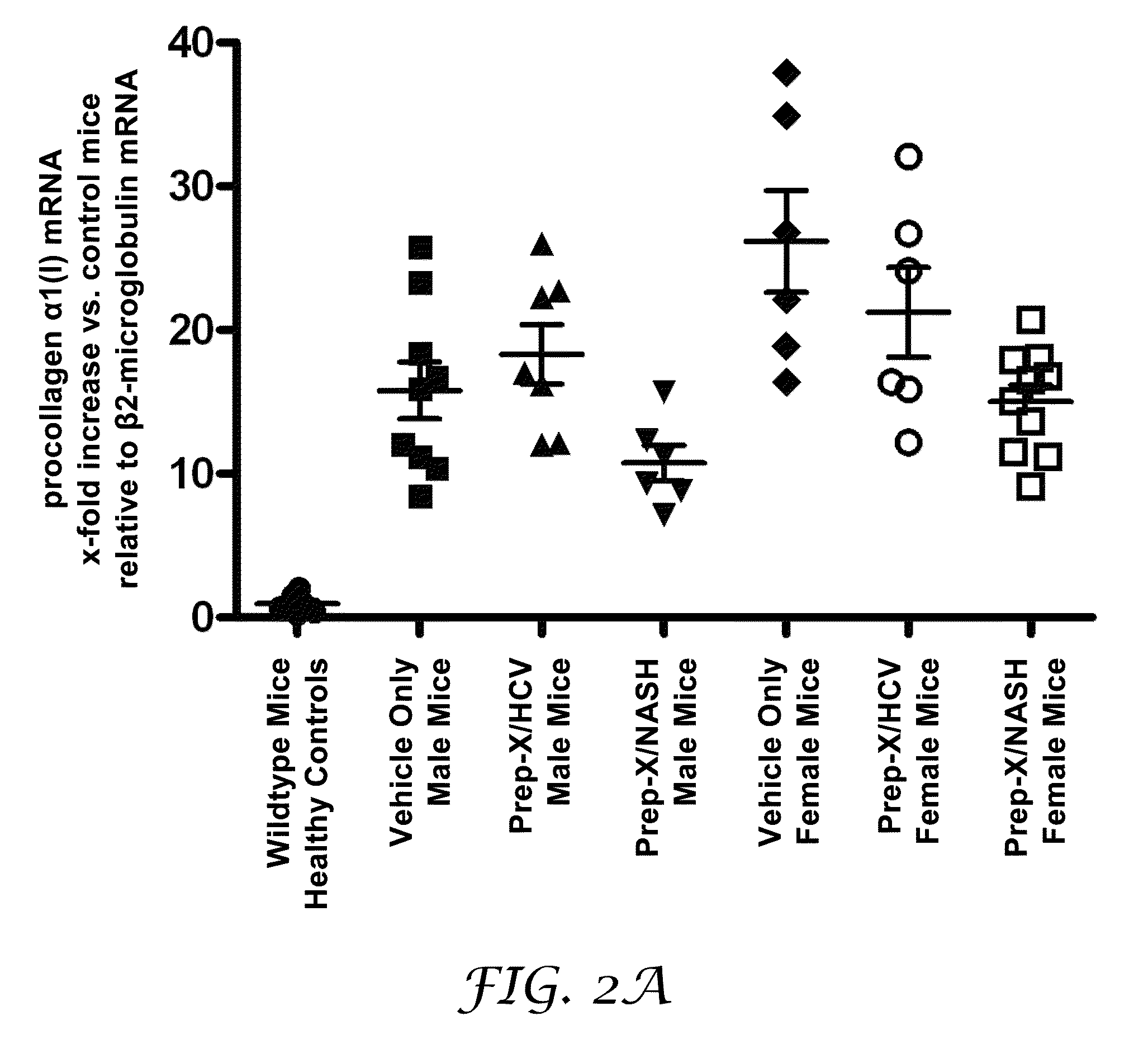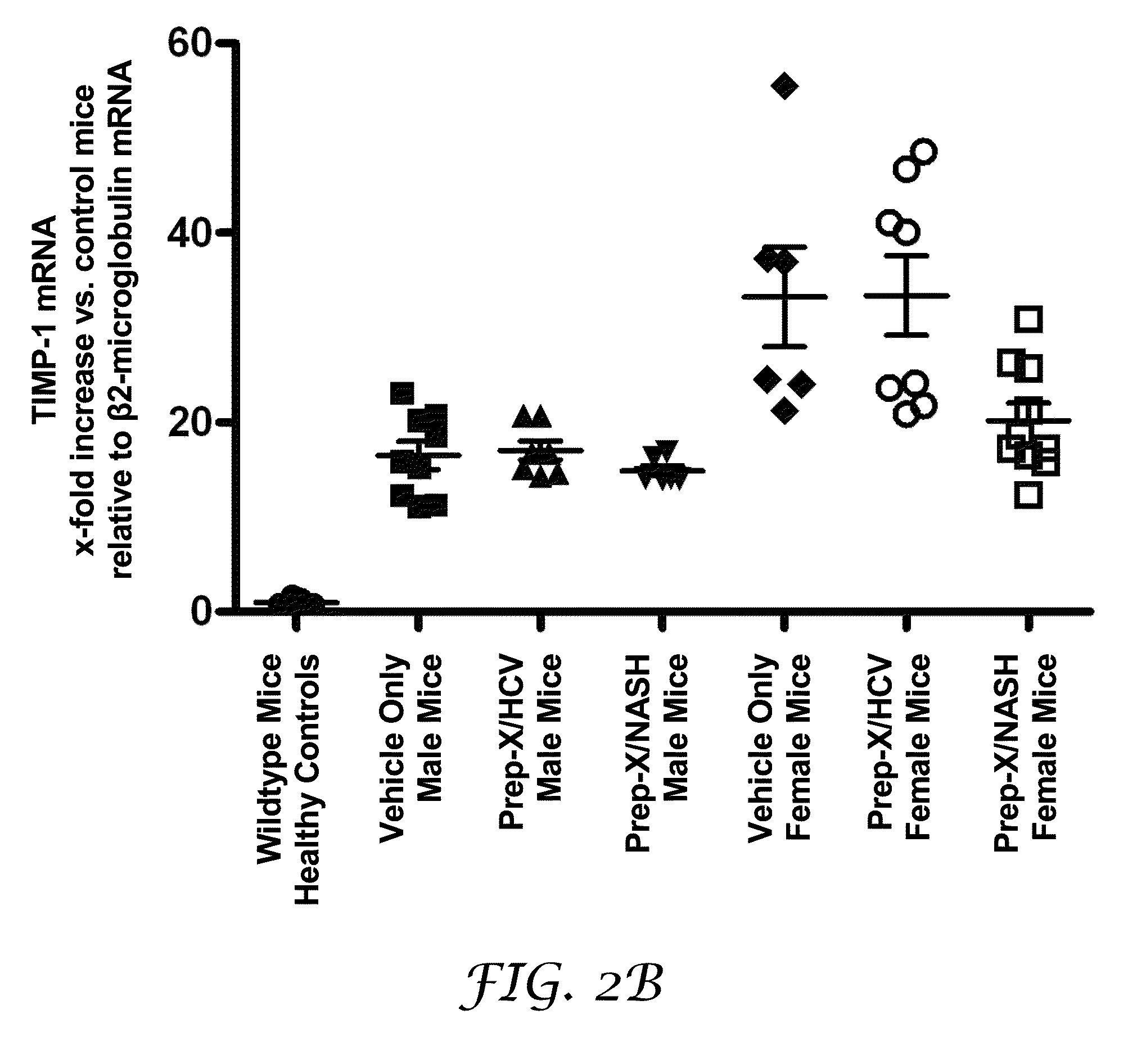Methods and formulations for treating chronic liver disease
a technology for chronic liver disease and liver disease, applied in the direction of biocide, anti-noxious agents, drug compositions, etc., can solve the problems of liver not being able to fully process nutrients, hormones, drugs, poisons found in the bloodstream, and loss of normal microscopic lobular structure of the liver, etc., to achieve the effect of reducing the risk of spontaneous bacterial peritonitis, reducing and improving the risk of bacterial peritonitis
- Summary
- Abstract
- Description
- Claims
- Application Information
AI Technical Summary
Benefits of technology
Problems solved by technology
Method used
Image
Examples
example 1
[0193]The purpose of this experiment was to test for the potential of an antioxidant formulation, either alone or in combination with an HCV-specific or a NASH-specific supplemental formulation, to impede the progression of ongoing liver fibrosis in a model if Mdr2 knockout mice.
[0194]Abcb4 is a human gene that is associated with progressive familial intrahepatic cholestasis whereby bile is prevented from flowing from the liver. Mdr2 (Abcb4)− / − mice have been characterized as developing progressive liver fibrosis. Mdr2− / − knockout and Mdr2+ / + wildtype mice were bred. Age-matched groups of Mdr2− / − mice of both sexes were treated during spontaneous progression of liver fibrosis from 4 weeks of age to 10 weeks of age. Mdr2− / − female mice are known to develop more severe lesions than males; hence, the analyses for mice in each gender were reported separately.
[0195]Six healthy wildtype mice undergoing no intervention constituted the control group. Four-week old Mdr2− / − knockout mice with...
example 2
[0206]The purpose of this experiment was to test for the potential of an antioxidant formulation, either alone or in combination with an HCV-specific or a NASH-specific supplemental formulation, to reverse an established fibrosis stimulated by an injection regiment of thioacetamide (TAA).
[0207]Sixty-eight six-week-old male C57BL / 6J mice were used in this study. Eight of these mice were used, without intervention under healthy controls, as the control group. Sixty mice were injected intraperitoneally three times a weak with escalation doses—0.1, 0.2, 0.3, 0.4 g / kg—of TAA for six weeks to induce liver fibrosis. Six of treated animals died during TAA-injunction and were excluded from the study. Three days following the last injection, eleven mice were sacrificed as a control for fibrosis induction. The remaining forty-three mice received a daily application of an antioxidant cocktail comprising the formulation and dose identified in Table 1 (“Prep-X”) in a 10 μl vehicle per g body weig...
PUM
| Property | Measurement | Unit |
|---|---|---|
| mass | aaaaa | aaaaa |
| concentration | aaaaa | aaaaa |
| energy failure | aaaaa | aaaaa |
Abstract
Description
Claims
Application Information
 Login to View More
Login to View More - R&D
- Intellectual Property
- Life Sciences
- Materials
- Tech Scout
- Unparalleled Data Quality
- Higher Quality Content
- 60% Fewer Hallucinations
Browse by: Latest US Patents, China's latest patents, Technical Efficacy Thesaurus, Application Domain, Technology Topic, Popular Technical Reports.
© 2025 PatSnap. All rights reserved.Legal|Privacy policy|Modern Slavery Act Transparency Statement|Sitemap|About US| Contact US: help@patsnap.com



